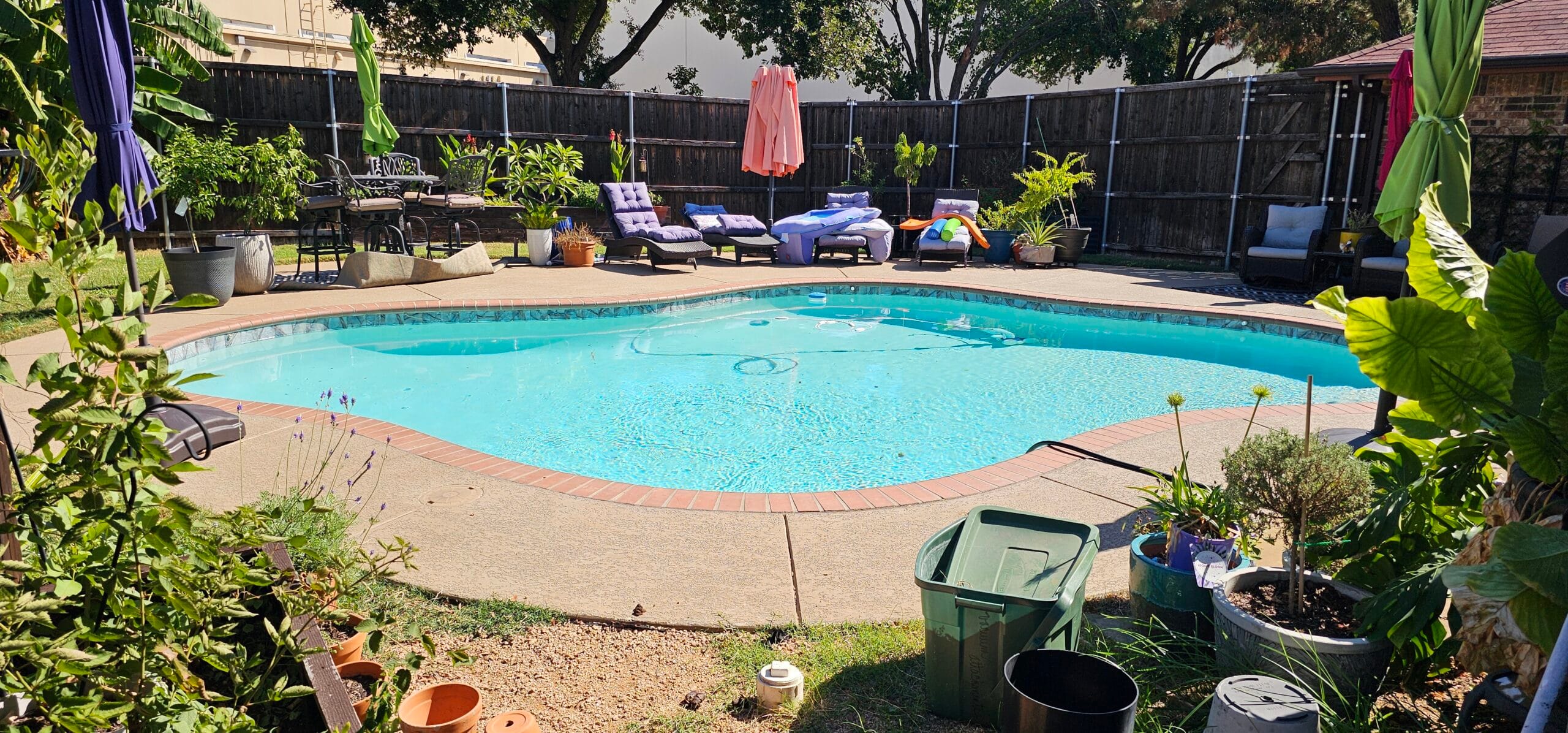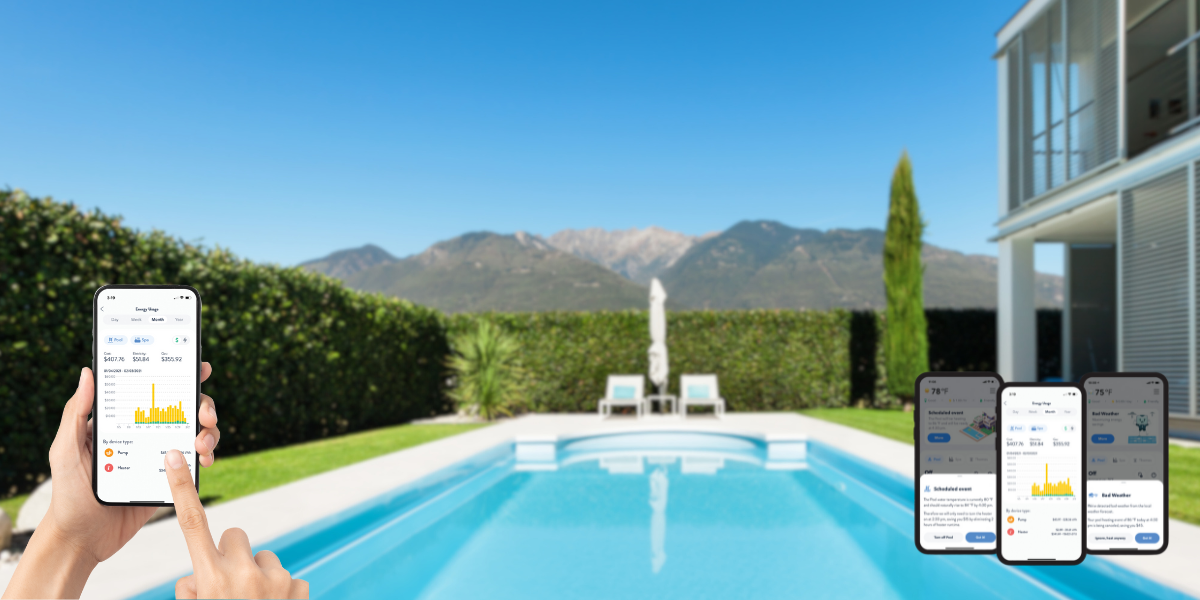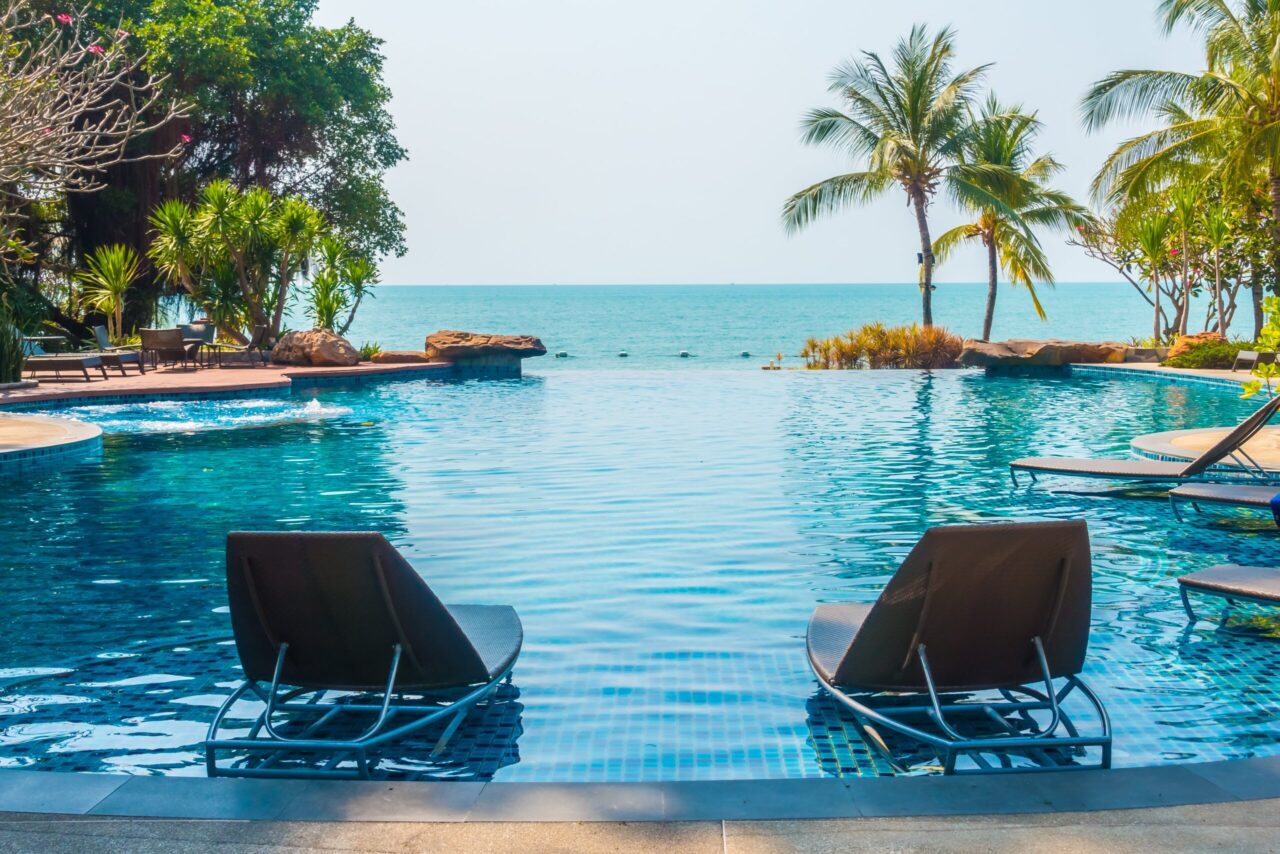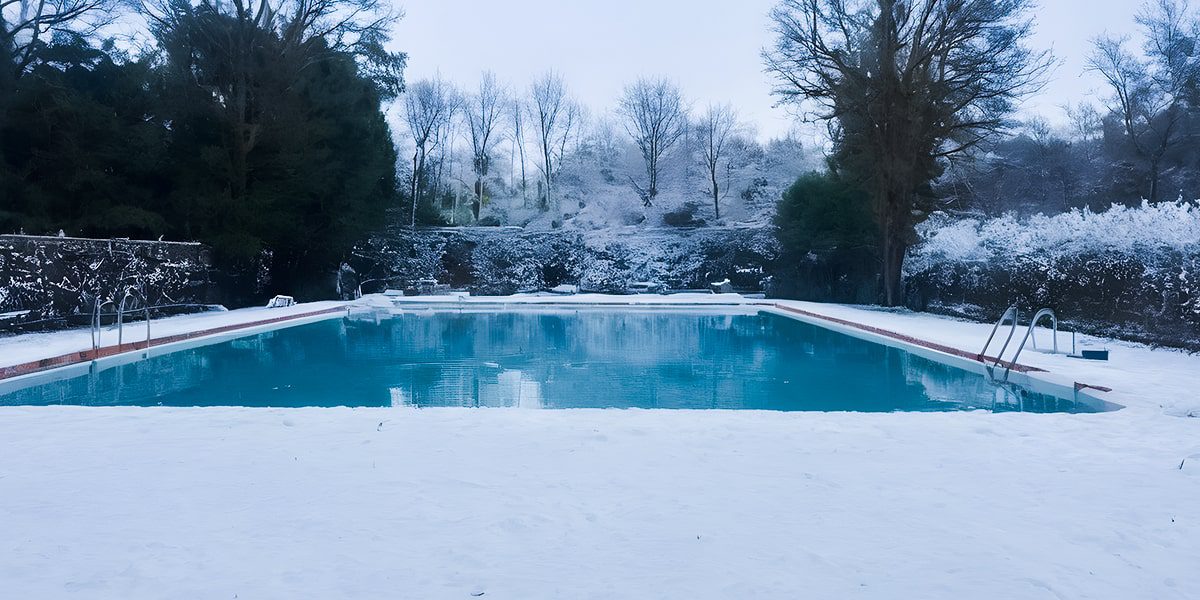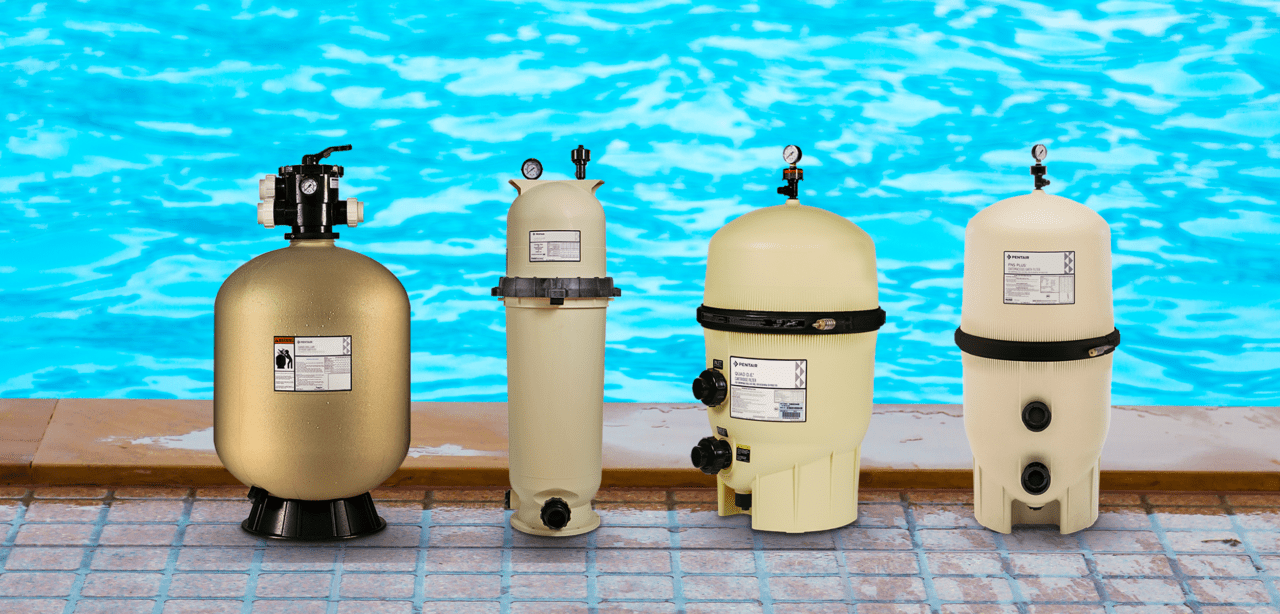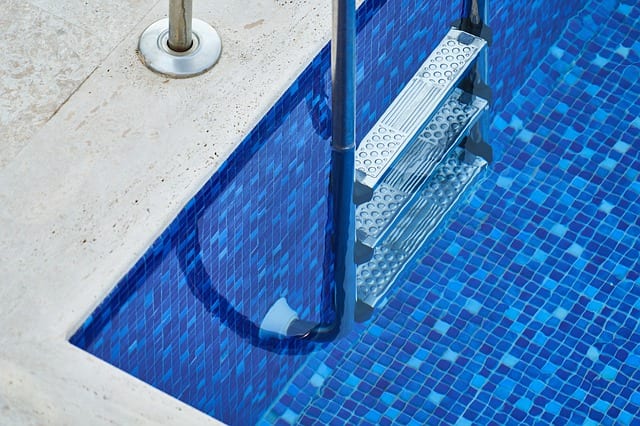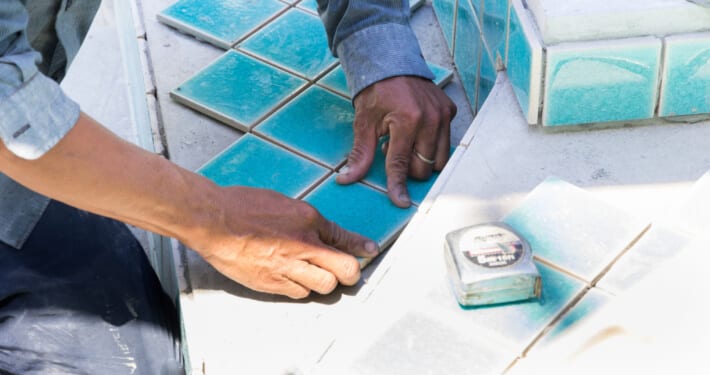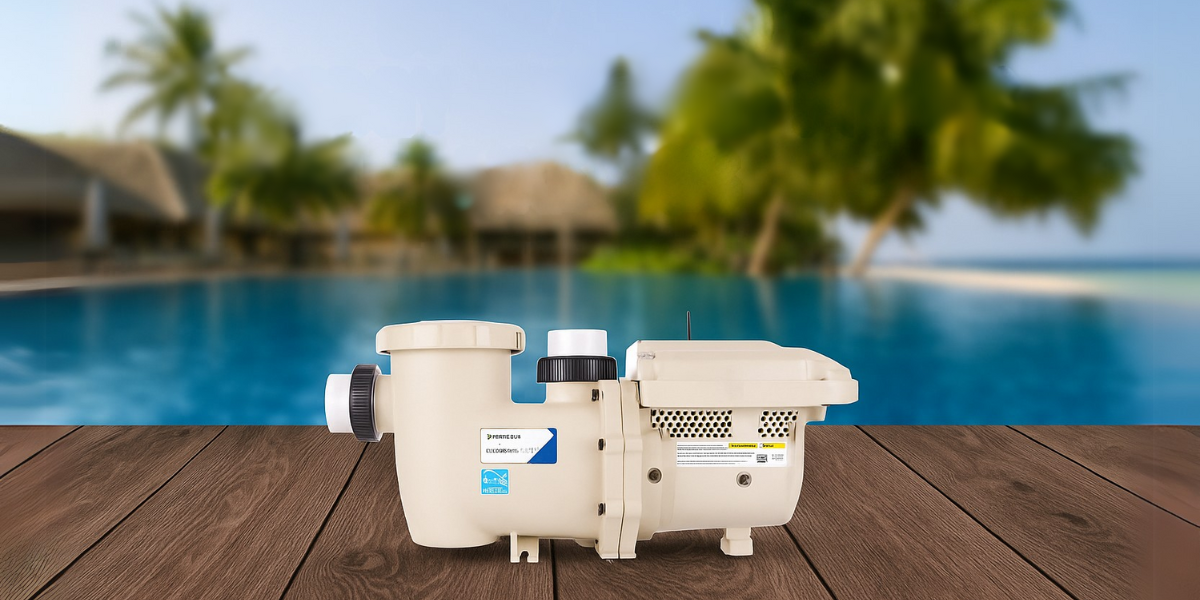Maintaining a saltwater pool may be difficult if you have never done it before. However, once you learn how to maintain a saltwater pool, you’ll probably find the salt system easier to operate than a typical chlorine pool. If you ask homeowners who have a Saltwater pool, they’ll probably say they like that they don’t have to buy chlorine anymore. That’s because saltwater pools create their own chlorine through a process known as electrolysis. Salt water pools offer notable health benefits, providing a gentler experience on skin and eyes also include no smelly chloramines, softer water, and less maintenance. Now, take note. Salt water pools aren’t zero maintenance.
You should still know how to maintain a saltwater pool to keep it in tip-top shape. That being said, let’s talk about some salt water pool care and maintenance tips so you can enjoy your saltwater pool for a long time.
Jump To
- Why Choose a Salt Water Pool?
- Salt Water Pool Basics
- Essential Tools and Supplies For Saltwater Pool
- Step-by-Step Salt Water Pool Maintenance
- Salt Water Pool Chemistry 101
- Common Salt Water Pool Issues
- Winterizing Your Saltwater Pool
- Cost and ROI of Salt Water Pool Upkeep
- Difference Between Saltwater Pool & Traditional Chlorinated Pool
Why Choose a Salt Water Pool?

There’s a good reason why saltwater pools are becoming more popular. They usually make swimming more enjoyable because the water is calmer and there are fewer strong chemical smells. Salt water also uses chlorine, but in a different way, which is called electrolysis. The process includes A salt chlorinator, also called a chlorine generator, which turns salt into chlorine, effectively sanitizing the pool water. Basically, you’re not getting rid of chlorine; you’re just making it differently.
Salt Water Pool Basics
It’s important to know the basics of a salt water pool before starting to do daily and weekly maintenance. This information sets the stage for good care and makes sure that every step you take is well-informed.
Salt Chlorinator (Salt Cell)

For salt water pools, the salt cell, which is also known as salt chlorinator, is the most important part of the pool salt system. This device has a set of electrically charged plates. When salt water runs over these plates, an electrolysis reaction takes place that turns salt (sodium chloride) into natural pool chlorine.
Key Tip: Regularly inspect the cell for any calcium or scale buildup, which can reduce its efficiency.
Pool Control Panel
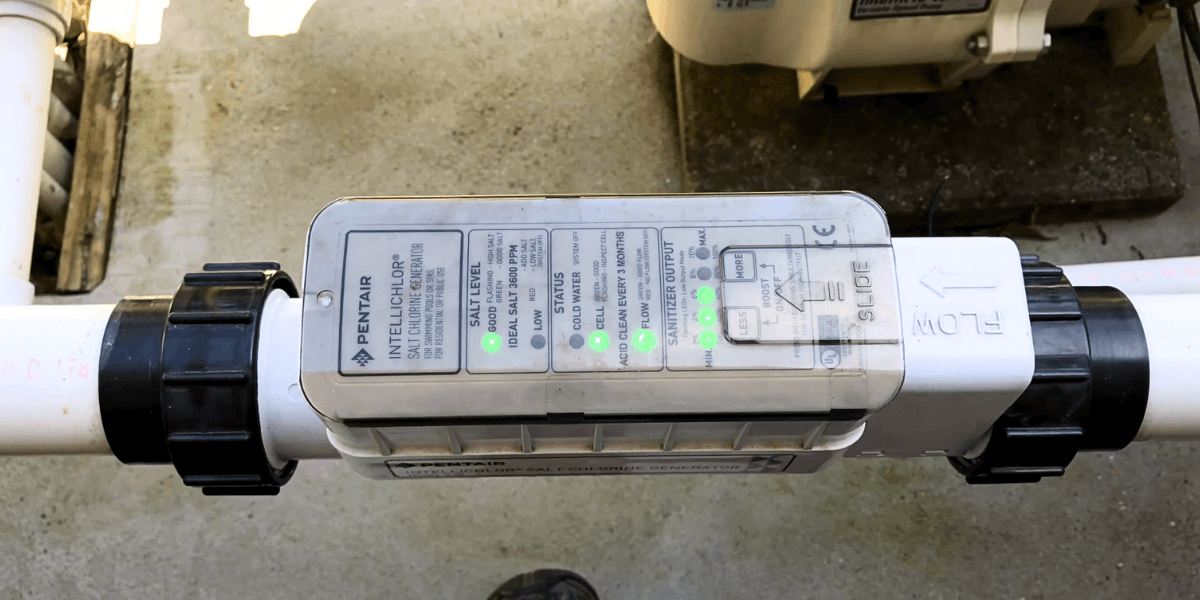
The control panel manages chlorine output, allowing you to adjust the system depending on the pool’s chlorine demand. A higher setting produces more chlorine, while a lower setting reduces production.
Key Tip: Monitor the display for error codes or alerts indicating the salt level is too high or too low.
Salt water Pool Filtration System
A standard pool filter (sand, cartridge, or DE filter) works in tandem with the salt cell to keep water clear. It removes debris, dirt, and other contaminants not neutralized by the chlorine.
Key Tip: Clean or backwash your pool filter as recommended by the manufacturer to maintain optimal performance.
Essential Tools and Supplies For Saltwater Pool
Having all the necessary pool maintenance supplies on hand makes caring for your salt water pool simpler, ensuring proper chemistry. Below are must-have tools, with brief insights:
- Water Test Kit or Test Strips
Essential for checking pH, alkalinity, calcium hardness, salinity, and free chlorine levels. Accurate testing helps you make informed adjustments to keep your water balanced. - Salt (Pool-Grade)
Ensure it is pure and free of added chemicals or anti-caking agents. This guarantees optimal performance of the salt cell and prevents unwanted residue. - Pool Brush & Skimmer
Use the skimmer to remove floating debris before it sinks, and the brush to scrub pool walls and floors, preventing algae growth and buildup. - Salt Cell Cleaner
This specialized solution (or acid wash) is used to remove scale deposits from the salt cell. Keeping the cell free of buildup ensures efficient chlorine production. - Pool Vacuum or Automatic Cleaner
Whether manual or automatic, a vacuum efficiently removes dirt, leaves, and other contaminants from the pool floor and walls—minimizing strain on the filter system. - Protective Gear
Gloves, goggles, and proper footwear protect you from harsh chemicals or splashes, ensuring safe handling and preventing accidents during pool maintenance.
Step-by-Step Salt Water Pool Maintenance
Salt water pool maintenance tasks can be grouped into daily, weekly, monthly, and seasonal routines. By dividing the tasks this way, you can avoid confusion and ensure each step is addressed at the appropriate time.
Daily Pool Maintenance
Keeping up with daily maintenance tasks is vital for a healthy saltwater pool. First, skim the surface to get rid of leaves, bugs, and other things floating on top. This keeps organic matter from sinking and breaking down. Next, empty the pump and skimmer baskets to ensure proper water flow and filtering. Also, check water purity and machine functioning visually. If you see cloudy water, be sure to look into it.
Weekly Pool Maintenance
Every week, begin by testing your saltwater pool’s pH, total alkalinity, free chlorine, and salinity using test strips or a liquid test kit. Aim for a free chlorine range of 1–3 ppm and a pH of 7.4–7.6. If your chlorine level is off, adjust your generator output; for pH imbalances, you can raise levels using baking soda or sodium carbonate and lower them with muriatic acid.
Remove algae and dirt from pool walls and floors by brushing and vacuuming. Keep an eye on your filter pressure gauge—if it’s 8–10 psi above, clean, backwash sand or DE filters, or rinse cartridge filters.
Also, check the salt cell for any scale or other debris that you can see and clean if necessary. Lastly, change the settings on your chlorinator based on the results of your chlorine test. If the levels are low, turn up the flow, and if they are high, turn it down.
Monthly Maintenance
Deep clean the salt cell if you see scale, using a mild acid solution or salt cell cleaner according to the manufacturer’s guidelines. Next, calcium hardness (aim for 200–400 ppm) and cyanuric acid (70–80 ppm) should be checked to maintain effective chlorine levels. Don’t forget to inspect pool equipment—such as ladders, lights, and seals—for corrosion or leaks, and give your pool cover a thorough rinse to prevent mold.
Additionally, monitor these four key parameters every month:
- Salinity
- Alkalinity
- Stabilizer (CYA)
- Calcium Hardness
Seasonal Maintenance
From spring to winter, you need to do different things to keep your saltwater pool in great shape. In the spring season, take off the pool cover and clean it. Then, try to reactivate all the systems, making sure the pump, filter, and salt cell all work. Finally, balance the chemicals. During the busy summer months, test more often, keep an eye on chlorine levels, and think about shocking the water every once in a while. If you live in a cold area, You should winterise your saltwater pool. To do that, lower the water level in the pool as fall comes. Also, clean and check the salt cell carefully before closing the pool. Winterize your pool lines and equipment, store detachable pieces indoors, and consider adding a winter chemical kit. Depending on where you live, you may never fully close the pool, but you can still lower the system’s use as needed.
Salt Water Pool Chemistry 101
Balancing pH, total alkalinity, free chlorine, calcium hardness, cyanuric acid, and salt levels ensures a clear and healthy swimming pool. Problems like algae or cloudiness can be found early on with regular tests. Maintaining ideal ranges keeps pool equipment from getting damaged and stops scale from building up. Big changes in water chemistry can be avoided by making small, precise chemical changes. Regular maintenance will keep your salt water pool clean and inviting all season long.
Pool Salt
Salt water pools typically operate with a salt concentration of 2,500 to 3,500 parts per million (ppm)—much lower than seawater—making the water gentler on skin, eyes, and clothing. However, some systems may require a slightly different range, so it’s important to consult your manufacturer’s guidelines to ensure you’re within the recommended levels for your specific unit. Additionally, keep in mind that even if your salt system’s control panel displays a specific salt reading, a separate salt test might show a slight variation. We recommend occasionally verifying your water chemistry with an independent source (such as a pool store or professional testing service) to confirm that your system is on target. In some cases, a faulty sensor or board can cause the panel to read low, prompting you to add excess salt. Before you know it, the salinity is far beyond the recommended range, and you’re facing multiple issues instead of one. Regular external testing can help you avoid this scenario and maintain a properly balanced pool.
Key Tip: Use pool-grade salt that is at least 99.4% pure sodium chloride and free of additives like anti-caking agents or iodine. Regular table salt or rock salt may contain these additives, which can lead to cloudy water and scaling issues in your salt water pool.
pH (Ideal: 7.4 to 7.6)
The pH of your pool water tells you how acidic or basic it is, which has a direct effect on how clear and comfortable it is. A high pH can make water cloudy and less effective chlorine, while a low pH can cause corrosion and skin inflammation. Weekly check and make changes by adding soda ash (to raise pH) and If pH is too high, muriatic acid is commonly used to lower pH. Keeping the pH level right is important for keeping things clean and for enjoying swimming.
Chlorine (1–3 ppm best)
Salt water pools produce chlorine automatically, however 1–3 ppm is needed for sanitization. Below 1 ppm, algae and bacteria grow; beyond 3 ppm, swimmers may have eye or skin irritation. Adjust the salt chlorinator or shock the pool to keep a clean, hygienic pool.
Calcium Hardness (Ideal Range: 200–400 ppm)
Scaling and rust are both affected by calcium hardness. Scale can form on pool surfaces and in the salt cell when the amount goes above 400 ppm. If it drops below 200 ppm, metal parts may corrode and plaster may break down. Partially emptying and refilling the pool can help lower high calcium levels, and hardness increasers can raise low levels, which will make the pool last longer.
Range of ideal total alkalinity: 80 to 120 ppm
It helps keep the pH stable so that it doesn’t change quickly in ways that hurt equipment or bother swimmers. If your readings drop below 80 ppm, you can raise that by adding baking soda. If they go over 120 ppm, you should use an alkalinity reducer. The pH levels in your pool water stay stable as long as you test it often and make small changes as needed.
Cyanuric Acid (Stabilizer) (Ideal Range: 30–50 ppm)
Cyanuric acid shields chlorine from sunlight, which makes it operate longer and means you don’t have to change the amounts as often. As CYA levels rise above 50 ppm, chlorine loses some of its power, which makes algae more likely. If the level is too high, add stabilizer to bring it down; if it’s too low, reduce the pool water. Balanced CYA saves chemicals and maintains sanitary conditions.
Common Salt Water Pool Issues
Even the best-maintained salt water pool can occasionally run into issues. Below are some of the most common problems and their solutions.
How To Clear A Cloudy Saltwater Pool Fast
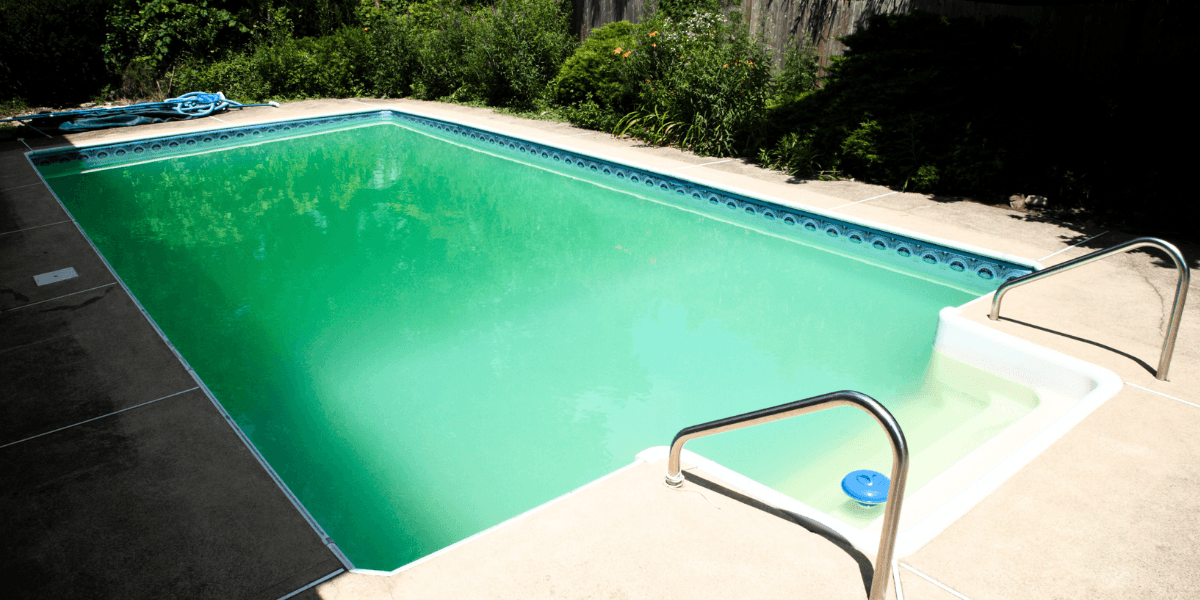
When the water in your saltwater pool gets cloudy, there are a few things you can do to get it clear again. A lot of the time, an unbalanced pH or low chlorine is to blame. To keep the chemical of the water in check, you should first test and change the pH, total alkalinity, free chlorine, and salinity. Clean or backwash the pool filter often to make sure it’s working at its best, and clean the salt cell for ideal performance. Use clarifiers or flocculants to help particles stick together and think about using a shock treatment to get rid of tough contaminants. Increase the time the pump runs, hoover often and keep an eye on the chemicals. If the cloudiness doesn’t go away, talk to a pool professional to find and fix any problems that might be causing it.
How To Get Rid of Algae In Saltwater Pool
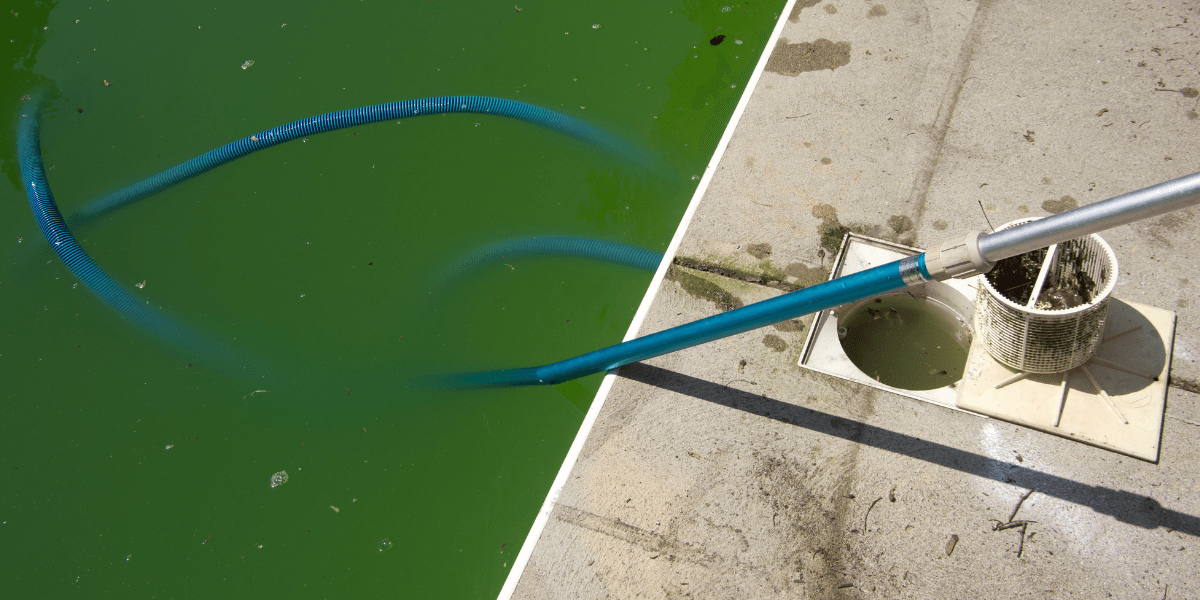
Algae typically appears when sanitizer levels drop or water circulation is inadequate. Besides low chlorine, factors such as high phosphates or infrequent brushing can contribute to an outbreak. To combat algae, start by shocking the pool to raise chlorine levels and brush every surface thoroughly—including steps, ladders, and corners where algae hides. Confirm that the salt cell is producing enough chlorine, and test phosphate levels, as high phosphates can fuel growth. Finally, improve circulation by running the pump for longer periods and maintaining a balanced water chemistry to prevent regrowth.
How To Clean Scale Buildup On Salt Cell
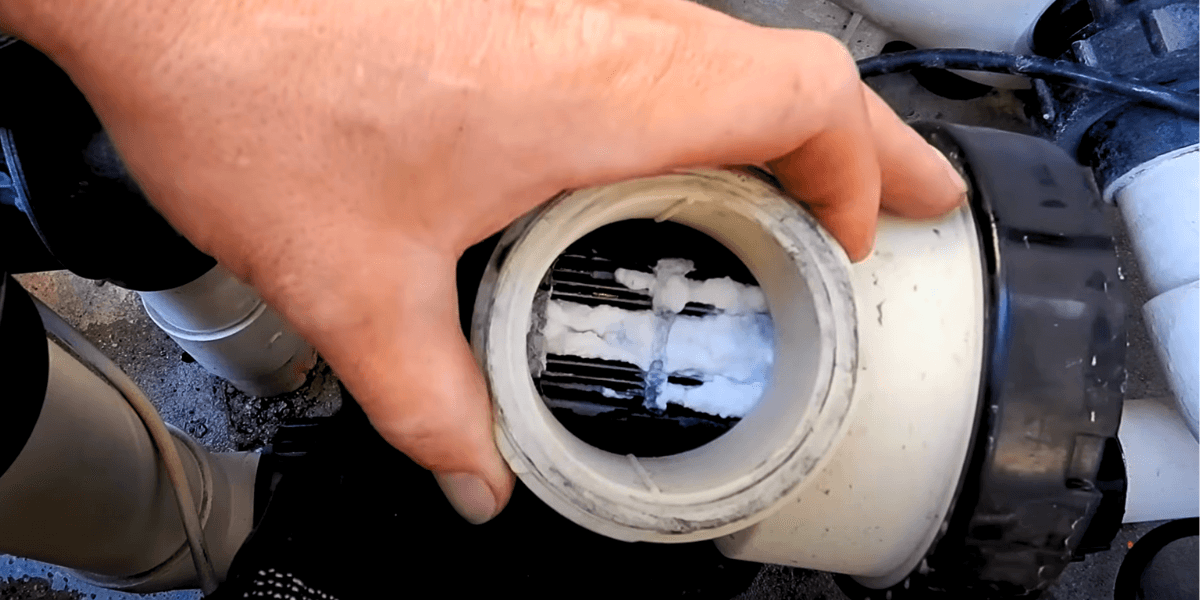
Scale forms in salt water tanks, especially inside the salt cell, because the water has a high calcium hardness and a high pH. Cells are ideal places for minerals like calcium to crystallize and develop layers because of their warm and acidic environments. This growth can block the cell, which stops water from flowing and lowers the production of chlorine and the life of the equipment.Use a mild acid wash or a commercial scale remover to clean and check your salt cell on a daily basis to get rid of the scale. It is essential to maintain balanced water chemistry, with a pH of 7.4–7.6, total alkalinity of 80–120 ppm, and calcium hardness of 200–400 ppm being the ideal ranges. Maintaining these methods prevents buildup, protects equipment, and maximizes chlorine output.
How To Prevent and Remove Saltwater Corrosion
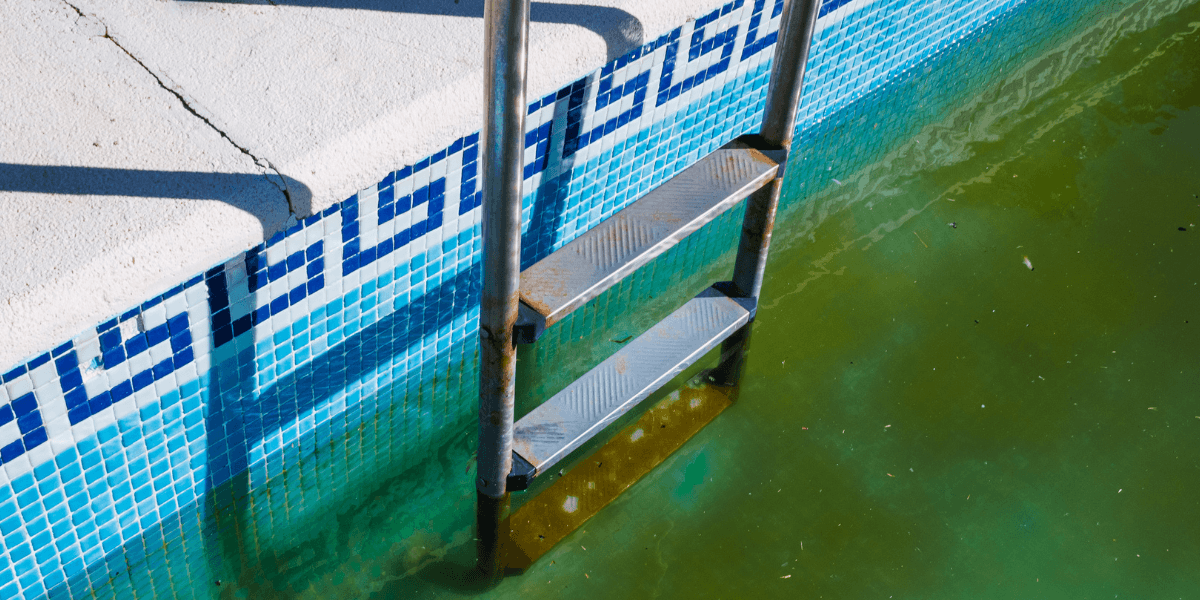 When metal parts are exposed to imbalanced water or stray electrical currents in a saltwater pool, corrosion usually happens. This can cause rust and damage to the structure. Make sure the water has the right chemistry, especially a steady pH level, and maintain salinity within the advised range to avoid corrosion. Using corrosion-resistant parts (like stainless steel or specially coated materials) also helps. Make sure your pool’s grounding and electrical bonding follow the proper standards, as poor bonding often causes galvanic rust. Installing sacrificial anodes (like zinc anodes) helps protect metal fixtures by drawing corrosive activity away from vulnerable areas. Regularly inspect all your pool equipment and address any signs of rust or wear before they worsen.
When metal parts are exposed to imbalanced water or stray electrical currents in a saltwater pool, corrosion usually happens. This can cause rust and damage to the structure. Make sure the water has the right chemistry, especially a steady pH level, and maintain salinity within the advised range to avoid corrosion. Using corrosion-resistant parts (like stainless steel or specially coated materials) also helps. Make sure your pool’s grounding and electrical bonding follow the proper standards, as poor bonding often causes galvanic rust. Installing sacrificial anodes (like zinc anodes) helps protect metal fixtures by drawing corrosive activity away from vulnerable areas. Regularly inspect all your pool equipment and address any signs of rust or wear before they worsen.
How Much Salt Add To Pool
The amount of salt required for a saltwater system is crucial for its effective operation. Generally, a salt concentration ranging from 3,000 to 4,000 parts per million (ppm) is recommended for optimal performance. It’s essential to test and maintain salt levels within this range to ensure the electrolysis process, which generates chlorine, functions efficiently. Regularly monitor and adjust salt levels based on your pool’s size, climate, and usage to uphold the balance required for a properly functioning and refreshing saltwater pool experience. Read this article on How to Add Salt to a Saltwater Pool.
Winterizing Your Saltwater Pool
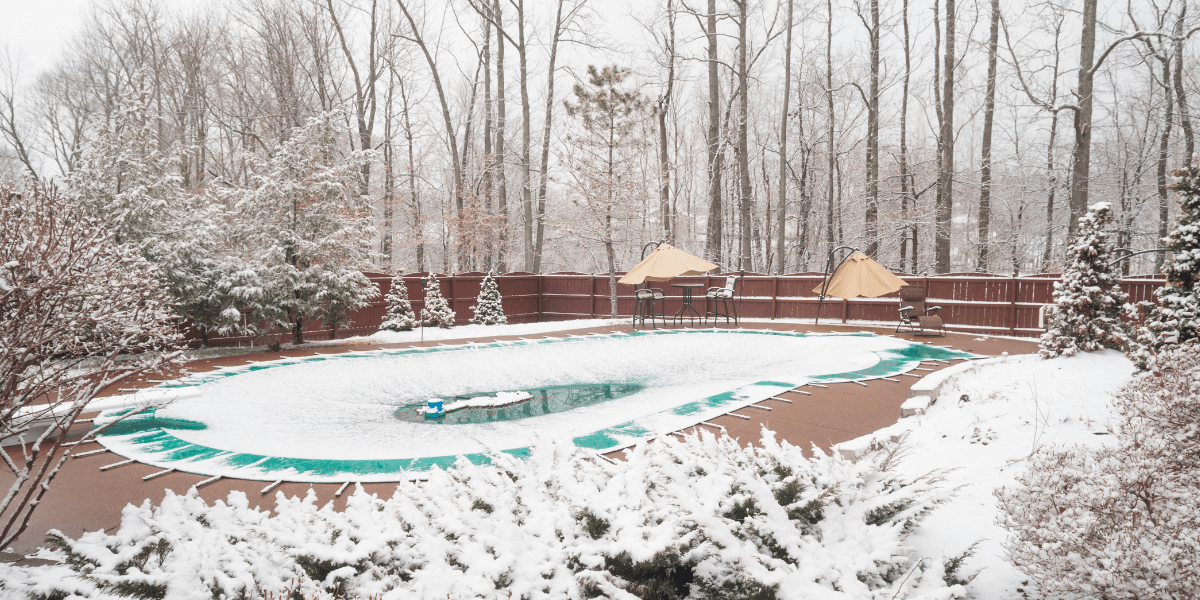
Winterizing your saltwater pool is essential for preserving its integrity during colder months. Begin by adjusting water chemistry and balancing pH and alkalinity. Lower the water level, remove debris, and clean the pool thoroughly. Disconnect and store equipment, such as pumps and filters, in a climate-controlled space. Add winterizing chemicals, and consider using a pool cover to protect against debris. Regularly monitor the pool throughout winter. Proper winterization ensures a smooth reopening when warmer weather returns. Read More.
Cost and ROI of Salt Water Pool Upkeep
A lot of people who just got a salt water pool want to know how much it costs. A salt chlorinator system costs more up front than a regular chlorine system, but you may save money in the long run because you won’t have to buy as much chlorine.
- Initial Equipment Cost: Salt cell systems can range from a few hundred to over a thousand dollars, depending on pool size and brand.
- Ongoing Salt Costs: Once you achieve the correct salt level, you usually only add salt to compensate for backwashing, water loss, or splash-out.
- Salt Cell Replacement: A salt cell typically lasts 3–7 years. Replacing it can cost anywhere from $300 to $800 or more.
- Chemical Costs: You will still need pH adjusters, alkalinity increasers, and potentially shock treatments, but overall chlorine purchases will be significantly reduced.
Return on Investment (ROI) can be seen over the lifespan of your salt cell, especially if you plan to keep the pool for many years. Plus, the user-friendly nature of automated chlorine generation often justifies the upfront expense.
Difference Between Saltwater Pool & Traditional Chlorinated Pool
The key difference between a saltwater pool and a traditional chlorinated pool lies in how chlorine is introduced. In a traditional pool, chlorine is manually added, while a saltwater pool generates chlorine on-site through electrolysis. This results in lower chlorine levels, providing a milder water experience. The continuous chlorine generation in saltwater pools simplifies maintenance, offering a more automated and convenient pool care approach.
A well-maintained salt water pool can offer a relaxing, enjoyable swim with fewer harsh chemicals and less maintenance hassle. By following the outlined tasks—daily, weekly, monthly, and seasonal—you’ll keep your water balanced and your equipment running efficiently. When combined with the right tools, consistent upkeep ensures crystal-clear water and a comfortable swimming experience all year round.
Important notice:
Maintaining a saltwater pool can be a demanding task, especially for those with busy lives. However, there’s a significant opportunity for people living in Texas to enjoy hassle-free pool ownership. Our professional pool service is specifically designed to address the unique needs of Texas pool owners.
FAQ
Want More tips? Read other Articles



